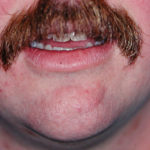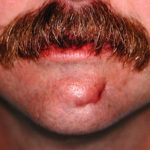Scar revision is both a frequently performed and a common consultation in plastic surgery. Scars can occur from trauma or surgery and can be very distressing for some patients. While time makes many scar better, some scars go on to be raised, wide, or stay very red without improving. On the face, scars can be quite conspicuous if their orientation does not parallel the relaxed skin tension lines of the face. While many scars can be improved by plastic surgery techniques, there are some fundamental principles of scar revision that every patient must understans and be willing to accept.

Secondly, getting the final result in scar revision takes time. Usually much more time than one would prefer to spend, but this fact is inescapable. I always tell patients, think of stepping back a step to eventually move forward two steps. One step back…six to 9 months to step forward…and in children this will usually be longer. I have no celebration about scar revision results until we are out close to a year. If it really looks better then, call the band for the victory parade!
Thirdly, scars are all different and not every scar can be improved. Scars that are very wide, raised, or persistently red after some time have a better chance for improvement than others. While many different types of scar revision treatments exist (visit http://www.scarscription.com for an overview of scar treatments), the reality is that most scar revisions involve some form of cutting them out and reclosing them. Many of the other methods of scar revision, such as the laser, are adjunctive treatment methods that complement surgical excision but are not primary treatment methods.
Lastly, all bets are off when it comes to the nastiest of scars….keloids! Many patients think they have keloids but they do not. Keloids are raised overflowing scars which keep on growing and cause significant pain and distortion. They are bad actors and few treatments even work, let alone work well. This doesn’t mean we don’t try, but the failure rates are horrendously high.
It is my job as a plastic surgeon to guide each patient and help them determine if scar revision is worth the effort. Sometimes it is…and sometimes it is not. The consideration for scar revision must be done on an individual basis.
Dr. Barry Eppley
Indianapolis, Indiana



